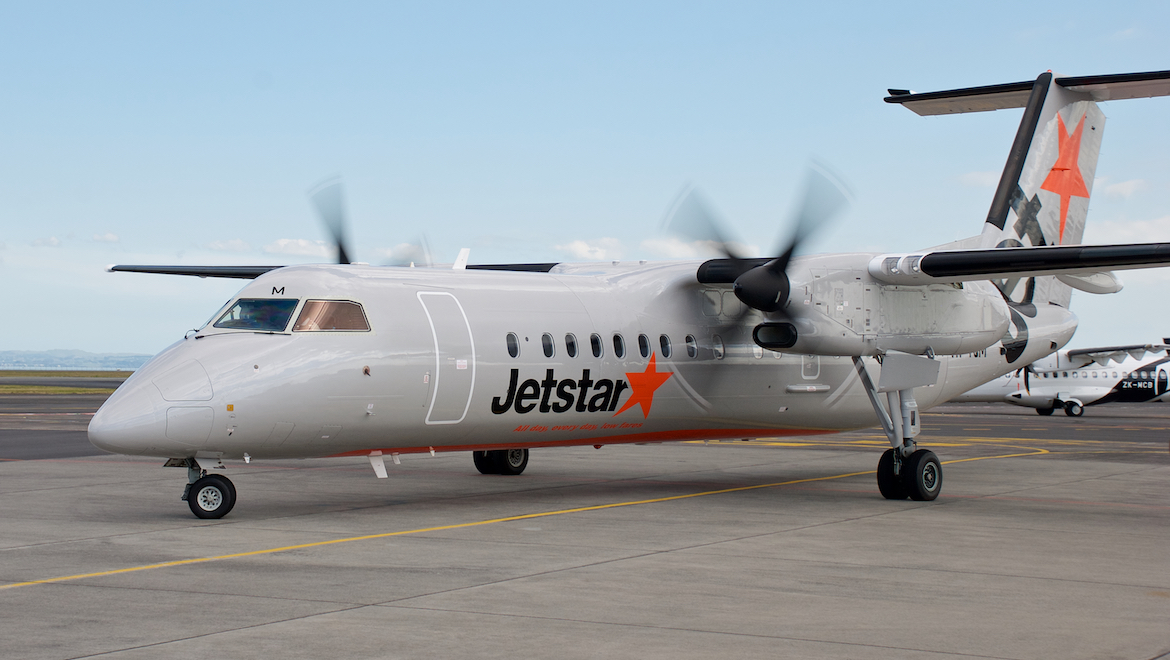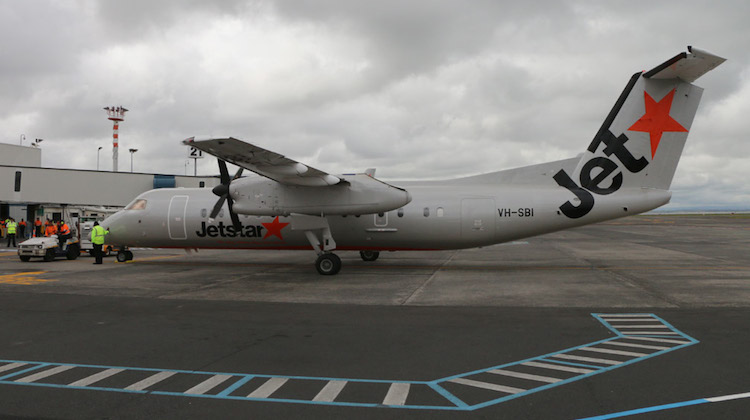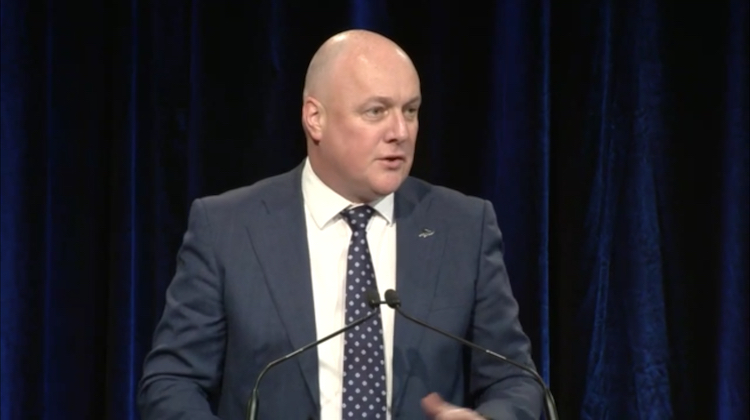
Jetstar group chief executive Gareth Evans says the Qantas-owned low-cost carrier (LCC) lost about $20 million on its regional New Zealand turboprop services in the past year, leaving the airline group little option but to call time on the four-year operation.
Regional services on five routes in New Zealand with Q300 turboprops are expected to end on November 30 2019, Jetstar announced on Wednesday, with consultation with about 70 staff underway.
Evans said there was no prospect of a material improvement in the regional turboprop operation, which began in 2015, in the forseeable future.
“We’ve had losses for a period of time and it doesn’t appear that those losses are going to mitigate going forward,” Evans told reporters in Auckland on Wednesday.
“We cannot see from where we stand today, any changes to the business conditions or the prospects of this part of the business in the medium to long term which is why we’ve made the decision that we’ve made.”
Evans described Jetstar’s Q300 operation as a “genuine attempt” to bring competition and low fares in these New Zealand regional markets.
And while the financial performance had “moved around over time”, the current circumstances were unlikely to change.
“We wanted to give it time and we have given it time but from where we stand today I think we’ve got to call time,” Evans said.
“We are not cutting and running, we’ve given it four years and that is a long time in anybody’s language.
“I think people will understand that you can’t run losses forever and so we’ve made this decision.”

Evans said there were between 15,000 and 20,000 people with confirmed bookings after the proposed November 30 2019 end date. Those passengers would be offered a full refund, rebooking on alternative services or alternative dates on the Jetstar New Zealand network.
Also, Air New Zealand has made available special fares for passengers impacted by the withdrawal of those services.
The Q300s were operated on behalf of Jetstar by QantasLink’s Eastern Australia Airlines. Over the past four years, there were between three and five turboprops flying from Auckland to Napier, Nelson, New Plymouth and Palmerston North, as well as between Nelson and Wellington.
Those aircraft will now be return to Australia and redeployed on the QantasLink network.
Jetstar’s proposed withdrawal from those five regional routes was also raised by shareholders at the Air New Zealand annual general meeting in Auckland on Wednesday.
Outgoing Air New Zealand chief executive Christopher Luxon said in response to a question the Jetstar decision highlighted the challenges faced by airlines on these sorts of thin regional routes.
“What this does underscore is how difficult it is flying in regional New Zealand,” Luxon said, adding that the regional economics of flying was “really tough”.
“People often have the misconception that because they’re small aircraft they must be much cheaper but on a cost per seat basis they are often much more expensive than our jet aircraft because you have less people on board covering the costs of flying.
“We had to do quite a drastic reset back in 2014 because on 15 of the destinations we flew to we lost $NZ52 on every customer flying them there.”
Air New Zealand said in a statement on Wednesday it would keep its lowest lead-in fares on the affected routes at current levels until the end of 2020, subject to fuel prices remaining stable.
That meant $39 one-way fares for Napier and New Plymouth to Auckland, and $49 for Aukland to Nelson and Palmerston North.
Further, he said the airline would consider adding capacity into those regions with midday or non-peak flying.

Luxon said New Zealand was very lucky with 85 per cent of its towns with populations of 20,000 people or more having scheduled air services. The next best was Australia, with 56 per cent of towns of 20,000 people or more having scheduled services.
“Despite some of the critics we have had, Air New Zealand has been growing our regions by two to three times the rate of GDP growth over the last five to six years. We’re there for the long run,” Luxon said.
Also, Luxon said Air New Zealand had been working with smaller airlines such as Air Chathams and Sounds Air to co-ordinate services into the regions, as well as working on interline agreements to allow baggage transfers and smoother connections.
He said some technology investment was needed to enable the arrangement but talks were well advanced “for some good link up over time.”










